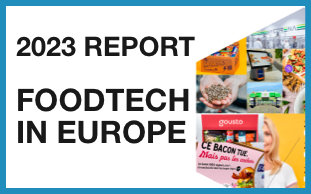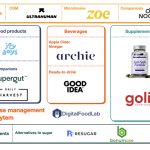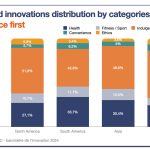Today, I’d like to talk about the topic which is at the top of my mind when I get asked, “What is the trend right now for FoodTech?”. And, in a word, that’s glucose, or more precisely glucose management.
There are at least two reasons for which I find this topic fascinating. First, it’s really a “revolution”, as it is taking the world by storm with the rise of GLP-1 drugs and other more natural glucose management products. Then, it may be the first time that we can see such a direct link between food and medicine. Finally, it also enables us to think about personalisation (and if you know me or have read these newsletters for a while, you know there is no other topic dearer to me).
1 – What are we talking about?
Beyond diabetes, glucose management is one of the hottest topics. Glucose spikes, mostly triggered mainly by the consumption of heavy food products, have been associated with obesity, diabetes and other health conditions. This has sparked significant interest in foods and other solutions that can effectively manage glucose levels.
More recently, GLP-1 drugs, such as Wegovy or Ozempic, have also helped to attract attention to this topic. These medicines were initially designed for diabetes management but are (very) effective in weight loss. In a nutshell, they mimic the action of one hormone called GLP-1, which in turn makes you digest your food more slowly (managing glucose levels) and reduces your appetite. Almost 1 million prescriptions of these drugs were made in the US in December alone. This already has wide implications for food companies: a recent study showed that users are shifting their food budgets, notably when they eat in restaurants.
While this creates a new market of consumers seeking “companions” to help them alongside their weight-loss journey, it also increases the demand for natural alternatives for consumers seeking to manage their glucose levels better.
2 – The innovation ecosystem and the image of the future?
One of the most striking aspects is that the growth of this ecosystem came almost as a surprise for large food companies. The topic of glucose management has been on the table for years, but it only took off after the introduction of GLP-1 drugs. Now, most of them are talking about future product launches. In the meantime, a burgeoning startup ecosystem is structuring, and it is already giving us a glimpse of what we may see in the future.

🥫 Food products: startups such as Joy Days create snacks that are branded as “spike-free”. Others, such as Supergut, create “companion” foods which are directly targeted at GLP-1 users, and are here to help them during their journey.
🧃 Beverages: there is a growing range of beverages to help you manage your glucose levels. There is one ingredient that is very common: apple cider vinegar, which has been found to lower glucose spikes if consumed before eating. Startups, such as Archie, have emerged to reposition this ingredient, make it more fashionable, and create new experiences (shots, ready-to-drink…).
💊 Supplements: made of natural ingredients, these supplements act as preventive solutions (to the consequences of glucose spikes) and also alternatives to GLP-1 drugs.
🍬 Ingredients: here we have an “old” ecosystem which is getting rejuvenated by the current hype around glucose, and hence sugar. Many startups are developing alternatives to sugar, to be used in processed foods (such as baked goods). The goal is to have lower calories, but now increasingly to have an impact on glucose levels.
📱Services: services are either CGM (continuous glucose monitoring devices) startups helping users understanding what’s happening with their blood glucose or weight-loss apps such as Noom which now has a GLP-1 companion service.
3 – Now, what’s next?
This market is big, but it is about to become huge (estimated at $100B by 2030 just of the sales of anti-obesity drugs), and the strength of the demand, which is now almost infinite (manufacturers can’t produce enough to match it). So, the first thing is to point out that there will be room for a lot of different approaches.
Then, what we have saw in the above mapping can give us three ideas:
- There will be a growing trend around reformulation in order to have claims such as “good for your gut” or “anti-spike”. This will include notably sugar alternatives but also other newer ingredients.
- The search for food companions and even more for food and beverages that have benefits on glucose management will be a key topic. That’s why we consider “natural alternatives” such as Apple Cider Vinegar as really interesting.
- As you can see on the mapping, food, beverages, supplements and services (and GLP-1 drugs) are not integrated. That’s one of the areas where we see a huge opportunity to create real personnalisation. We already have consumers ready to pay thousands of dollars to achieve their goals, so there is the real possibility to offer something valuable combining devices alongside food products or ready-made meals.
As I said, this is only a glimpse of what could happen, and beyond the hype, this is both an opportunity and a challenge that all food companies should consider seriously. Recently, at DigitalFoodLab, we helped a client, a CPG leader, explore this ecosystem (and there is much more to say than what we put on this newsletter) and then identified where, how and with which partners he could make a difference. If that’s something that you’d like to explore with us, contact me here.







